The Nikon Nikkor Z 58mm F0.95 S Noct is an ultra-high speed manual focus lens for Nikon’s Z series of full-frame mirrorless cameras. The new Noct references the old manual focus AI and AIS Noct-Nikkor 58mm F1.2 from the mid-70s and early ’80s, a “special” lens designed to reduce coma particularly from bright light sources at night and in poor light. However, that’s where a good number of the similarities end.
While all S-type Z lenses are intended for pros and serious amateurs, the faster lenses appear better made than that of the other slower models. The Noct features an all-metal outer and eschews autofocus for manual focusing using a huge, finely machined focus collar, with close to a long 350-degree focus throw. It also features a highly complex optical system with no less than 17 elements arranged in 10 groups and has a 0.5 m (1.64 ft) minimum focusing distance.
Of those 17 elements, the Noct has three aspherical elements with one being an expensive large-diameter and ground type rather than molded to help with correction of coma and spherical aberration. In addition, it has four ED (extra-low dispersion) elements to help mitigate chromatic aberration. The lens also has Nikon’s full complement of Nano, Arneo and SIC coatings to improve ghosting and flare, as well as a fluorine coating to help when cleaning.
It also has slightly different cosmetics and features including a small OLED panel that can display the aperture setting, as well as the option to display focus distance with a depth-of-field scale below. There is also a customizable control ring to select exposure or compensation setting and a L.Fn button that allows access to the camera-based Fn functions, found on the camera body.
You can view the results for all tested lenses and create your own comparisons and in-depth analyses using our interactive image lens comparison tool.
Key specifications:
- 17 elements in 10 groups
- Three aspherical and four ED elements
- 11 blade, rounded aperture
- Manual focus only
- Programmable control ring and Fn-button
- 82 mm filter thread
- Minimum focus distance: 0.5 m (1.64 ft)
- Weight: 2000 grams (4.4 lb)
Test results
We tested the Nikon Nikkor Z 58mm F0.95 S Noct on the 45.7MP Nikon Z 7 where the camera and lens combined achieved a very high score DXOMARK score of 55. Indeed, it’s the highest score achieved by any lens and camera combination that we’ve ever seen.
This unique lens in the Z system has very high center sharpness even at the initial aperture which, given that it’s F0.95 is, frankly, a remarkable result. There is some fall off in sharpness starting in the mid zones and out to the corners, but let’s not forget this an F0.95 lens. By F1.2 the central zone of sharpness seen at F0.95 has expanded substantially beyond the mid zone/mid field and the corners have improved dramatically. From F1.8 onwards sharpness becomes more consistent and by F5.6 this is apparent across the field, albeit at the expense of central sharpness.
Geometric distortion is very low (below -0.2%) with some pincushion evident at the edges of the frame where it’s generally more noticeable. The Noct also has very good transmission, measured at 1.1 T-stop, some 0.3 EV behind the reported F-stop. Even though the lens is enormous vignetting is noticeable at the initial aperture but that’s not really a surprise, at least it doesn’t persist much beyond F1.8/2.
Where this lens shows some weakness is in its levels of lateral chromatic aberration. However, even that is debatable given the challenge of producing a ultra-high speed lens like this. We measured the fringing at up to 9 µm wide in the extreme corners, though it has very low levels across the frame, so even then it could be said that it’s well-controlled generally.
All things considered then, this Nikon Nikkor Z 58mm F0.95 S Noct has the optical performance to match its company’s credentials.
As always though, it’s well worth looking through the more detailed data to see how the lens performs at individual aperture settings and various focal lengths.
In-depth comparisons
We’ve compared the Nikon Nikkor Z 58mm F0.95 S Noct on the 45.7 MP Nikon Z 7 with arguably the most serious rival model from Nikon’s DSLR days the manual focus Zeiss Otus 55mm F1.4 ZF.2 mounted on the 45.7 MP Nikon D850, one of the best performing Nikon DSLRs ever made. At around $3,999, the Zeiss Otus 55mm F1.4 in F-mount is half the price of the Noct.
We’ve also compared the enormous Noct with one of the most svelte of Nikon’s current Nikkor Z lenses, the Nikon Nikkor Z 50mm F1.8 S similarly mounted on the Nikon Z7. This combination allows direct comparison with its far pricier sibling, the Noct. While seemingly quite modest with an F1.8 maximum aperture, the Nikon Nikkor Z 50mm F1.8 S has a high-grade optical system and a price of around $599 today.
You can see an overview of this comparison in our database.
Sharpness
In years past, ultra-high speed lenses like this usually weren’t particularly sharp at the maximum aperture, however with what could be called “over designed” lenses like this that trend has been reversed. The new Noct is very sharp wide open. Admittedly there’s a drop in sharpness from the mid-zone and onwards to the corners but even at F0.95 it’s sharper than either the Zeiss Otus 55mm F1.4 ZF.2 or the Nikon Nikkor Z 50mm F1.8 S at their respective initial apertures. At least that’s the case in the center, it’s only the Otus that can claim slightly higher sharpness in the outer zone though even that displays some astigmatic behavior.
Stopping down the Noct maintains superior sharpness over rivals’ respective F1.4 and F1.8 settings, including in the mid- and outer-zones. At F2.8, however, rivals’ center sharpness is on a par with the Noct, though the more affordable 50 mm F1.8’s edge weakness is still apparent. It’s not until F4-F5.6 that the Noct exhibits its most homogenous and uniform performance, with the edges closest in sharpness to the center. However, that is at the expense of overall sharpness. Even then the Noct has the best edge performance of the three. After that, the performance of all three is very similar with the most affordable just trailing the Noct and Otus, in that order.
Chromatic aberration
Lateral chromatic aberration appears in the image plane and the effect, shown as colored fringing, increases out towards the edges and particularly into the corners. While this effect is usually mitigated in software without loss in image quality, the separating of wavelengths reduces sharpness in the first place. High-grade optical designs can be used to overcome this, but this is reflected in the complexity, and thus, size, weight and price.
In this respect, the Noct performs very well over most of the frame even at the initial aperture. However there are quite high levels, peaking up to 9 µm in the extreme corners (90-100% field position) at F0.95, which is higher than that found on either the Zeiss Otus 55mm F1.4 ZF.2 or the Nikon Nikkor Z 50mm F1.8 S. While in the mid-zone (30-60% field position), levels are generally lower or at least no worse, higher levels of fringing remain throughout the aperture range.
Geometric distortion
Geometric distortion correction is another aberration that’s best corrected optically, and although the Noct has practically unnoticeable levels (measured at -0.2%) it may well be noticeable with certain subjects, such as normally straight edges that end up parallel with the image frame. Both the Zeiss Otus 55mm F1.4 ZF.2 and the Nikon Nikkor Z 50mm F1.8 S show similar levels, however, they both display barrel distortion whereas the Noct exhibits pincushion type. This is typically associated with longer focal lengths.
Vignetting (corner shading)
We were promised that vignetting would be mitigated by mirrorless designs. Be that as it may, the Noct displays quite high levels at the maximum aperture, with it peaking at around -2EV in the corners. This compares to around a maximum -1.6 EV for the two rivals in this comparison. However, just looking at the peak results can lead to erroneous conclusions. When looking at the vignetting profiles or field maps, the Noct’s visual weighting at F0.95 is not dissimilar to the Otus’ at F1.4. And it’s the “slower,” more accessibly priced Nikkor Z 50mm F1.8 S that shows a smaller central core, and arguably “heavier” visual weighting out towards the corners.
Transmission
High transmission is not only a highly sought-after characteristic it aids IQ with regards to noise levels, as a lower ISO setting can be selected for any given exposure level. It, therefore, has quite a bearing on our DXOMark score. Although the Noct measured T1.1 at the maximum aperture, which is some -0.3 EV from the reported F-stop and ‘worse’ than the more accessibly priced Nikkor Z 50mm F1.8 S at just -0.1 EV, it is still ahead of the Otus. The Zeiss, with a T1.7 maximum aperture, is some -0.5 EV behind the reported F-stop.
Conclusion
Like the original Noct-Nikkor was showcasing Nikon’s optical expertise back in the ’70s and ’80s, so too is the new Nikkor Z 58mm F0.95 S Noct. It has a phenomenal optical performance. Indeed, the new Noct on the Nikon Z 7 achieved the highest score by any lens and camera combination that we’ve seen to date. However, at close to $8000, it’s pricey and both the size and weight, not to mention the long-throw manual focus, are all sure to limit its appeal. Movie studios and rental houses won’t flinch though, nor will the well-heeled seeking the signature look of a highly-corrected ultra-high-speed lens, but for everyone else, it’s the kind of lens that people only dream of.
In this review, we have compared the Nikon Nikkor Z 58mm F0.95 S Noct mounted on a Nikon Z 7 to its closest rivals from other brands. Remember that the lenses may be used on various cameras with different sensors, or in some cases on different camera systems using different mounts, so the results will vary between them.
As usual, you can create your own comparisons and in-depth analyses using our interactive image lens comparison tool.


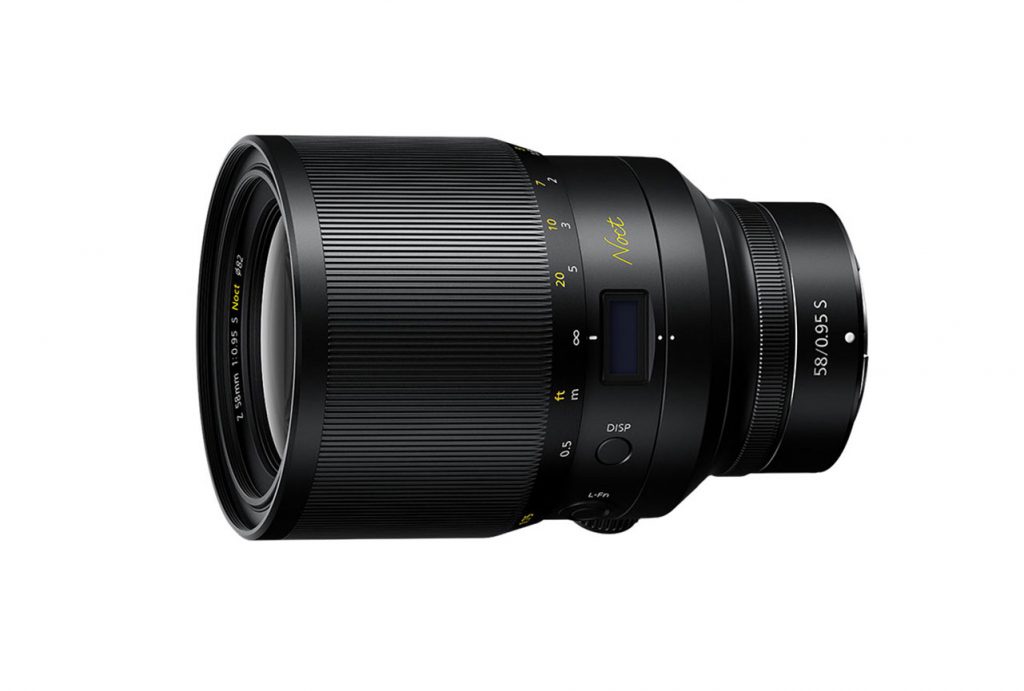


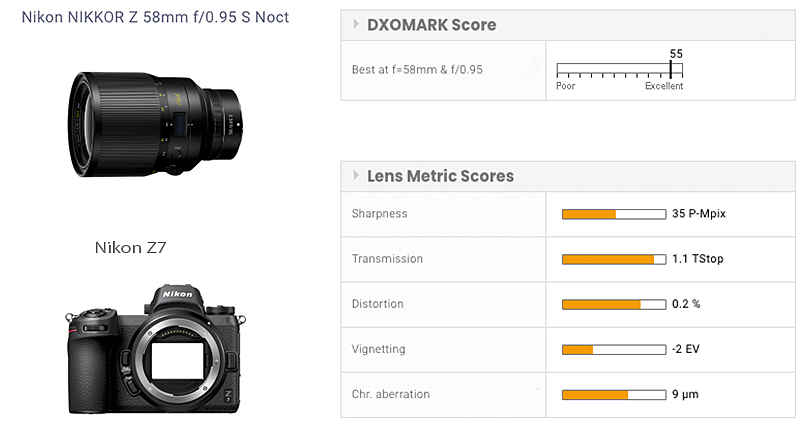
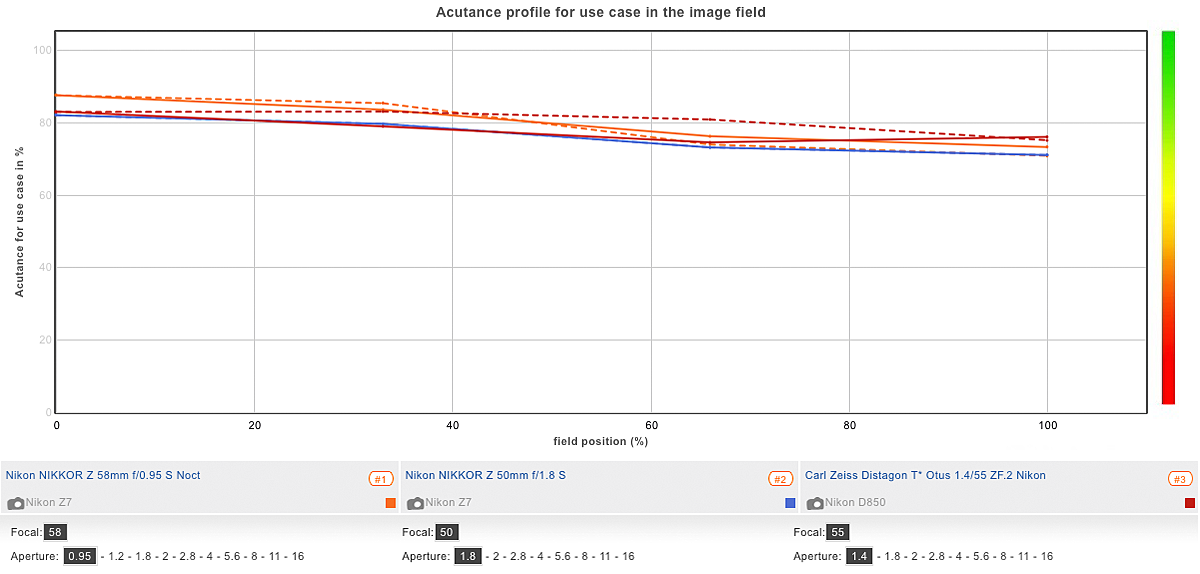
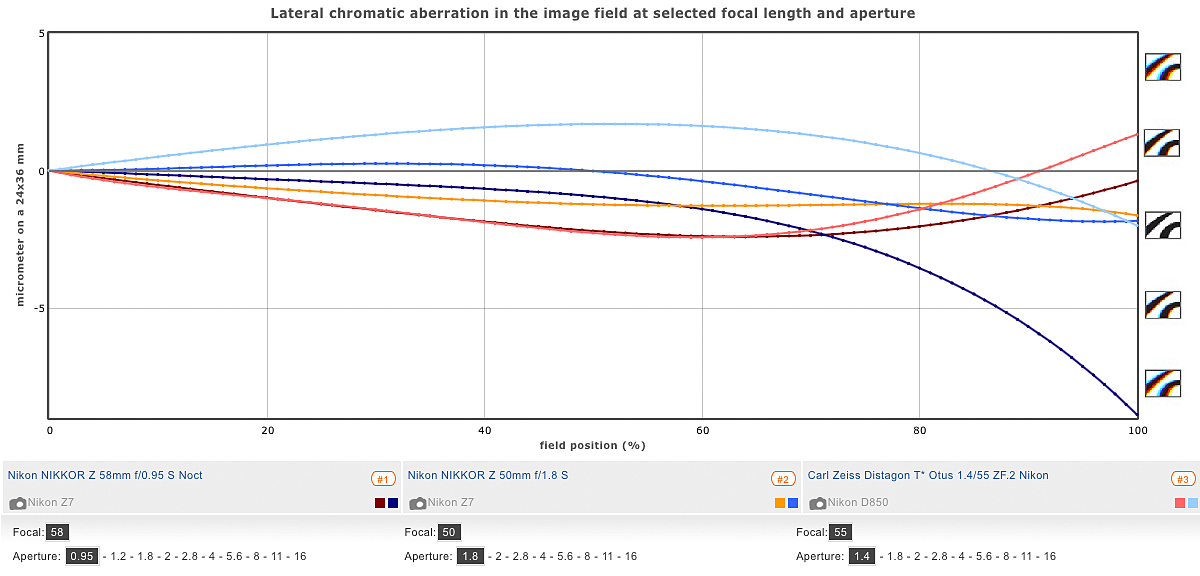

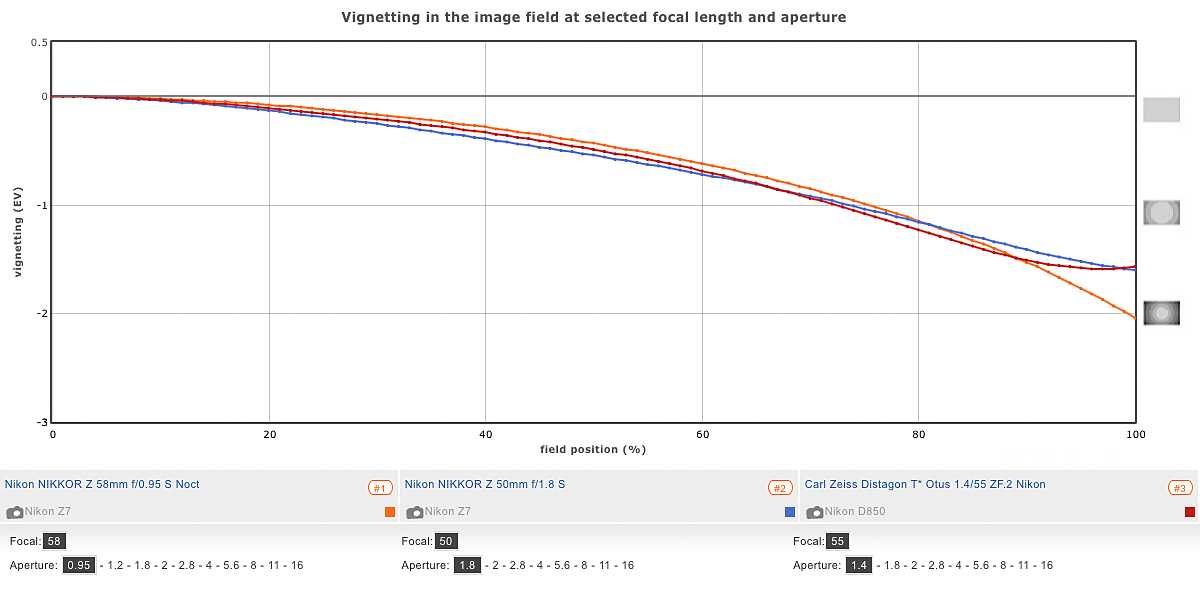
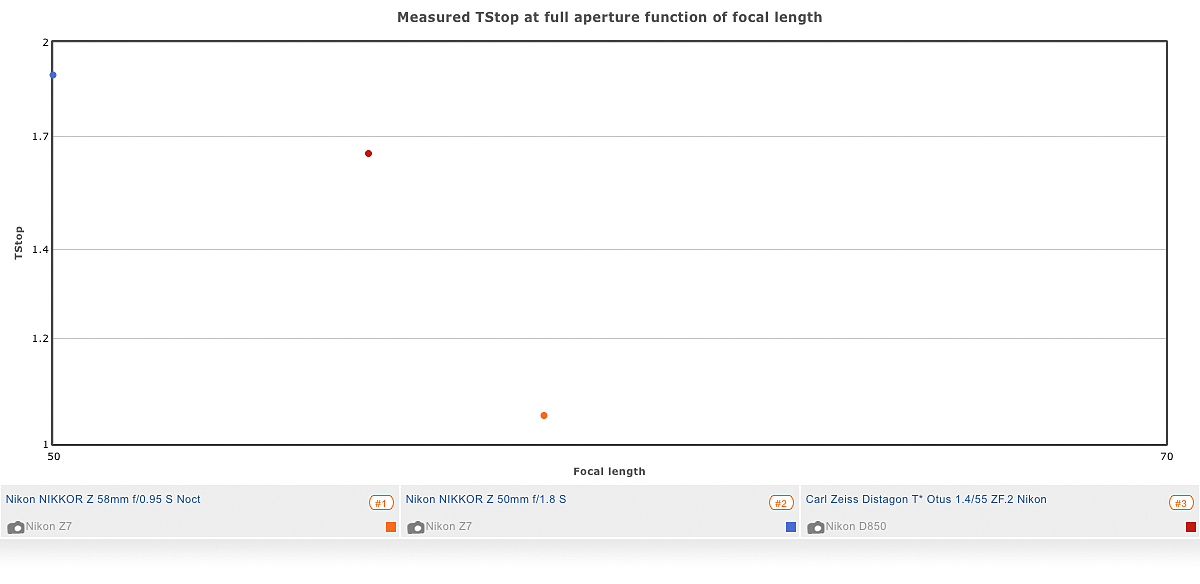
DXOMARK encourages its readers to share comments on the articles. To read or post comments, Disqus cookies are required. Change your Cookies Preferences and read more about our Comment Policy.